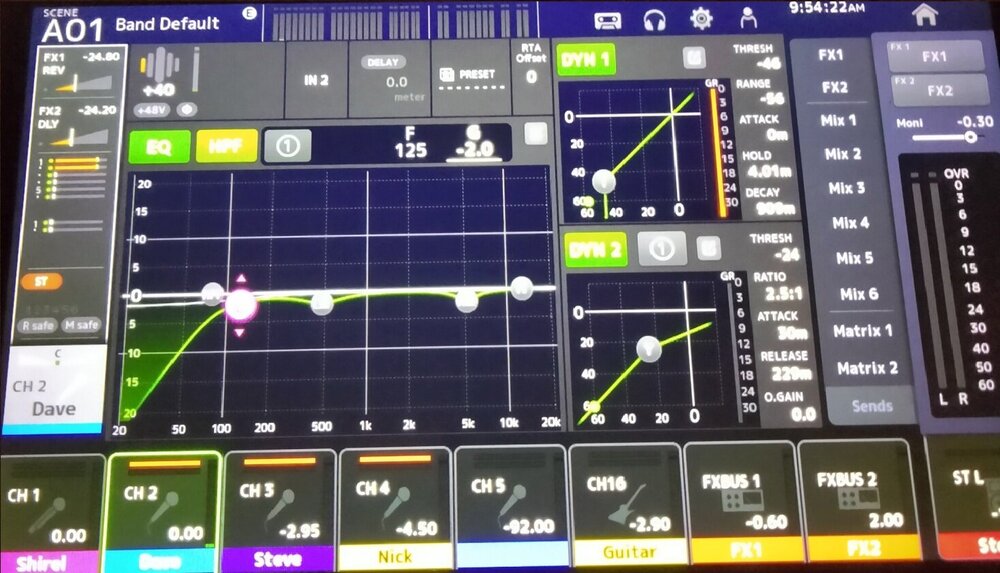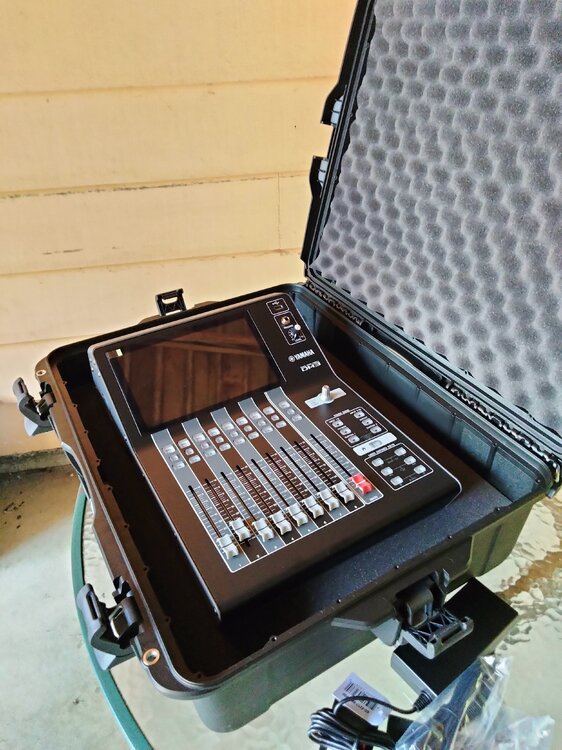-
Posts
3,370 -
Joined
-
Last visited
-
Days Won
22
Everything posted by bitflipper
-
Now imagine you rely on some life-sustaining medication. Your life could literally be in the hands of FedEx. This is not a hypothetical scenario.
-
I hate to think about the day when the last local retailer shutters its doors. While we were worried about Amazon taking over the world, in the post-apocalyptic future it will actually be the shipping companies that rule it all. There's a (Korean?) movie on Netflix right now that I started watching but can't remember the name. IIRC it's about a paramilitary delivery service that braves the lawless wasteland to bring oxygen and water to a population that can't go outside. That sh*t's too close to reality. I'm looking forward to the Barbie movie.
-
Golly gee whiz, that's a boatload of content for 80 bucks!
- 1 reply
-
- 1
-

-
This thread got me excited for a minute...but sadly the subs I want are still $1700 each. Better keep digging through the couch cushions. Can attest. These are literally HD650s, but $200 vs. $350. Maybe not ideal for mixing (too pretty-sounding) or for listening on the bus (open-back), but absolutely perfect for kicking back in the dark waiting for the edibles to kick in.
-
Sheesh, don't get me started on Guitar Center and why I'll never give them another nickel. Last I heard they were in bankruptcy. Wonder how that happened.
-
You can bet we'll be clear on this requirement in the future! Although even when we've had cover for previous outdoor gigs, the canopy was often not big enough for a 5-piece band plus PA. It's like peoples' mental image of a band is two guys playing banjo and harmonica. PhotoBrainer, I like that solar-powered fan-hat. Practical AND stylish!
-
Even if there was a distribution center right there in your city, I expect FedEx would first send it to Atlanta anyway. Good to know your 01V is still functioning. My biggest reservation about going digital is the fear that one day I'll flip on the power switch and - nothing. Something that almost never happens with analog boards.
-

Better Instrumental quality sounds
bitflipper replied to Rainer Fox's topic in Instruments & Effects
"Establish a budget" - then double it. Unfortunately quality orchestral instruments are $$. There are some here who've spent thousands. Come to think of it, that includes me. Look for libraries that feature lots of articulations, a major factor when it comes to realism. Vienna Symphonic (VSL), Cinesamples and Spitfire are some of the top-tier vendors. Ready yourself for sticker shock. However, lately I've been getting a lot of use out of an inexpensive library called Amadeus Symphonic Library. Despite its relatively low price, it sounds pretty OK and offers a complete orchestra with both solo and ensemble versions of each section. -
Now, that's not a bad idea, Keni. I often wear a straw fedora on stage. I could hide a baggie of crushed ice under there.
-
Slept poorly last night, kept waking up with leg cramps. Something something electrolytes. We're definitely not equipped for the coming global meltdown up here in the Pacific Northwest, land of flannel shirts, hiking boots and wool beanies with ear flaps. Woodstoves far more common than air conditioning. We've long whined about crazy housing prices driven up by the massive influx of California refugees. I think in the coming years we'll start calling them Climate Refugees. Look out, British Columbia, you're next. Oh wait, wasn't it B.C. that saw a whole town burn down a couple years ago from 126-degree (52c) weather? OK, Alaska then. For now.
-
Like most, I have often tossed out the word "exhausted" rather flippantly. Now I know what it really means. Today's gig was an outdoor company event. I don't have a problem with corporate gigs generally, since they pay well. But today we played from 3:00 PM until 6:00 PM and it was the hottest and muggiest day of the year so far. There was no canopy. Because there was no canopy to shield from the sun, I couldn't see the touchscreens on either my synth or my mixer. Very frustrating. And because the A/C in my car is broken, we were already dripping with sweat before we even arrived at the venue. By the time we got set up everyone was dragging, me especially. The whole time my knees were wobbly. My keyboards were sticky with hand-sweat. I poured ice water over my head at every opportunity. On our breaks I retreated to my car and just collapsed. Normally, I make a point of having a pee before we start playing, but I was completely dry, despite drinking gallons of water. By the end I had to have the bass player drive my van home while I my head flopped out the window like a dog. My fear is that I'm just too old to handle that kind of heat. Next weekend we're playing a festival in that same town. We go on at 4:00 PM. At least it's only a single 45-minute set. Maybe it's time to add a small fan to my rig? Maybe get over my reluctance to wear short pants, too. The audience will just have to deal with my blindingly white legs.
-
Tangent: as a former boater, I can also attest that many of those rush hour morons have boats, too. The Z-axis ain't so bad, but Newton's laws are a bitch.
-
I just got home from an unavoidable trip along the absolute worst highway in my state. I keep looking for a sign saying "all morons must use I-405". It's got to exist somewhere, because that road is clearly a magnet for them. The thought of all those idiots having to deal with the Z axis is terrifying, since they haven't figured out the X dimension yet.
-
Saw this on Reddit:
-
This is the most important advice you'll get here. The more you listen on the same headphones (or speakers) the more your ears will become attuned to what a good mix sounds like on those headphones. Even if they're not perfect.
-
Well, I'm sure we're only a few years away from a working Star Trek transporter. You'll be able to order a guitar and in an instant have it materialize at the wrong address in another city. Imagine a world where a Nigerian prince can steal your identity and order himself your house. Or your wife and kids. Forget flying cars, this is a far more interesting Future.
-
Same here. The main limitation of Kontakt-based instruments is that you're restricted to the fx that NI have included with the sampler. For the most part, they're actually decent - at least for basic effects such as convolution reverb. But if you want a rotary effect or a believable amp sim or modulated delays they'll often fall short. Or require a lot of obtuse tweaking to get what you're after. That's why external fx are almost in my chain for sampled guitars. I actually don't have a big assortment of amp sims on hand, and have been meaning to add Scuffham S-Gear for years. But Guitar Rig will get me reasonably close as far as amplifier and speaker distortion, then it'll be sweetened with Valhalla Ubermod and/or Valhalla Delay, and sometimes D16's Redopter. A FET-style compressor usually ends up in the chain. Often lots of automation. I also like to use mismatched instrument/amp combinations, such as fat bluesy distortion on an acoustic guitars. OTS' lap steel and Slide Acoustic are favorites for this treatment, as are Indiginus' Delta Blues and The STEEL.
-
I just found out there's a top-5% subreddit (r/FedEx) that seems dedicated to complaints about FedEx, most of which are identical to mine. I seem to recall that Sweetwater's checkout page included an option to ship via UPS instead. Now I know why. Unfortunately, it looks like UPS is about to go on strike on August 1st. I'm sure FedEx will step up to take up the slack.
-
You so rarely hear Mr. Gibbons speak, it's almost a surprise when he turns out to be well-spoken and thoughtful.
-
- 2
-

-
All of my orchestral libraries work that way. One workaround is to stretch out the previous articulation to where you're currently restarting playback. As Mark noted above, Cakewalk will see that an articulation is in effect even though the starting event has passed and will correctly apply it - but it has to know there's an active articulation in play. If it automatically searched back for previous keyswitch events that could result in some screwy effects if the previous articulation was momentary (meaning only applied during the keyswitch note duration) rather than toggled.
-
Getting it ready for the gig as best I can without actually having the band present. Should be an interesting first set. Fortunately, our next performance is a one-off low-pressure venue - an afternoon gig, either in a warehouse or in a parking lot next to a busy highway. I'm kinda hoping it's the latter so we can recreate that scene in Nashville where the band's playing in the NASCAR infield during a race. Except it'll be a line of RVs on their way up to Stevens Pass. Think my 2.5:1 compression ratio will be too conservative?
-
Testing, testing, 1, 2, 3. Happy does not begin to describe my joy and relief. I'll still be carrying the old mixer around for awhile, until I'm confident in the new one. After all, it's basically a laptop with 24 XLRs on the back. Except with a laptop I'd stand a chance of troubleshooting it if it crapped out. If this one dies, it's off to Yokohama.
-
Doot, doot, doot, lookin' out my back door...and there it was, dumped by my basement door. A door we never use, that you can't even see from the driveway. He must have known I was gonna give him a coarse word or two and made a quick exit. Wonder what my "signature" looked like on his pad. I'm not complaining, though. It's here at last.
-
Makes sense. Gas is 50 cents cheaper up there than in my neighborhood. Or... the driver has a gambling problem and has to pass too many casinos on the way. There are several between there and here. Wonder what the payout is if you put a digital mixer on red and it hits.







